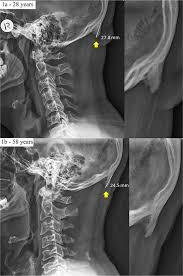Researchers in Australia have found evidence that young people appear to be increasingly growing bony protrusions at the base of their skulls, right above the neck.
Examining 1,200 X-ray images of adult Australians, the researchers found that 41 percent of those between 18 and 30 had developed these bone spurs, which is 8 percent more than the overall average.
Some were only 10 millimetres long (0.4 inches) and barely noticeable, while others were up to 30 mm in length (1.1 inches), as the scientists described in their 2018 study.
Lead author David Shahar, a health scientist at the University of The Sunshine Coast, recently told the BBC
that he has been a clinician for 20 years, and only in the last decade, increasingly he has been discovering that his patients have this growth on the skull,”
The growths are happening at a very particular spot of the skull: right at the lower back part of our heads we have a large plate known as the occipital bone, and towards its middle is a slight bump called the external occipital protuberance (EOP), where some of the neck ligaments and muscles are attached.
Because it’s an attachment site, the location of the EOP is technically an enthesis. These places in our skeletons can be prone to the development of spiky bone growths called enthesophytes, typically in response to mechanical stress – for example, additional muscle strain.
As Shahar and his colleague Mark Sayers’s data indicate, there’s a prevalence of EOPs growing longer in young people.
Other studies have noted that 68 percent of staff and students report neck pain after using mobile devices for, on average, 4.65 hours a day. Bad posture, of course, is nothing new, but this is significantly more time than we humans used to spend craning over a book or writing in our diaries just a few decades ago.
To be clear, these elongated EOPs are not necessarily harmful in their own right, but they could be a symptom of a larger problem. The ways in which our bodies compensate for poor posture could put added stress on certain joints and muscles, increasing our chances for injury or musculoskeletal issues in the future.
“Although the “tablet revolution” is fully and effectively entrenched in our daily activities, we must be reminded that these devices are only a decade old and it may be that related symptomatic disorders are only now emerging,” the authors conclude.
“Our results suggest that the younger age group in our study have experienced postural loads that are atypical throughout the other tested age groups.”


